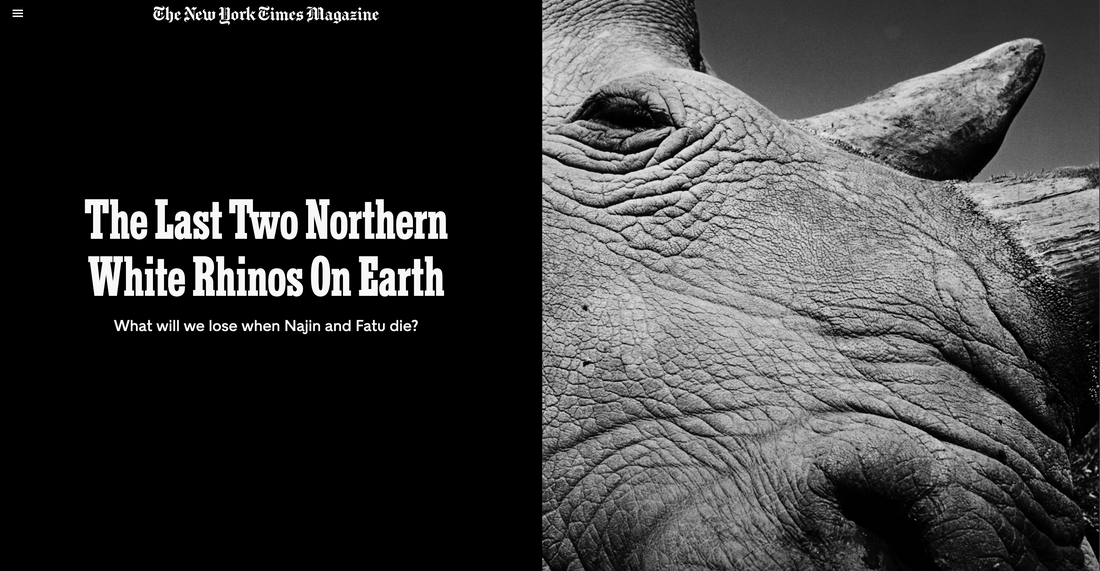
The Last Two Northern White Rhinos on Earth - NEW YORK TIMES
Partager
The day Sudan died, everything felt both monumental and ordinary. It was a Monday. Gray sky, light rain. On the horizon, the sun was struggling to make itself seen over the sharp double peaks of Mount Kenya. Little black-faced monkeys came skittering in over the fence to try to steal the morning carrots. Metal gates creaked and clanked. Men spoke in quiet Swahili. Sudan lay still in the dirt, thick legs folded under him, huge head tilted like a capsizing ship. His big front horn was blunt, scarred, worn. His breathing was harsh and ragged. All around him, for miles in every direction, the savannah teemed with life: warthogs, zebras, elephants, giraffes, leopards, lions, baboons — creatures doing what they had been doing for eons, hunting and feeding and scavenging, breathing and going and being. Until recently, Sudan had been a part of this pulse. But now he could hardly move. He was a giant stillness at the center of all the motion.
Sudan was the last male northern white rhinoceros on earth — the end of an evolutionary rope that stretched back millions of years. Although his death was a disaster, it was not a surprise. It was the grim climax of a conservation crisis that had been accelerating, for many decades, toward precisely this moment. Every desperate measure — legal, political, scientific — had already been exhausted.
Sudan was 45 years old, ancient for a rhino. His skin was creased all over. Wrinkles radiated out from his eyes. He was gray, the color of stone; he looked like a boulder that breathed. For months now, his body had been failing. When he walked, his toes scraped the ground. His legs were covered with sores; one deep gash had become badly infected. The previous day, shortly before sunset, he collapsed for the final time. He struggled, at first, to stand back up — his caretakers crouched and heaved, trying to help — but his legs were too weak. The men fed him bananas stuffed with pain pills, 24 pills at a time. Veterinarians packed his wounds with medical clay.
In the last years of his life, Sudan had become a global celebrity, a conservation icon. He lived, like an ex-president, under the protection of 24/7 armed guards. Visitors traveled from everywhere to see him. Sudan was a perfect ambassador: He weighed more than two tons but had the personality of a golden retriever. He would let people touch him and feed him snacks — a whole carrot, clamped in his big boxy mouth, looked like a little orange toothpick. Tourists got emotional, because they knew they were laying hands on a singular creature, a primordial giant about to slide off into the void. Many hurried back to their cars and cried.
Written by Sam Anderson
Read full article here: https://www.nytimes.com/2021/01/06/magazine/the-last-two-northern-white-rhinos-on-earth.html